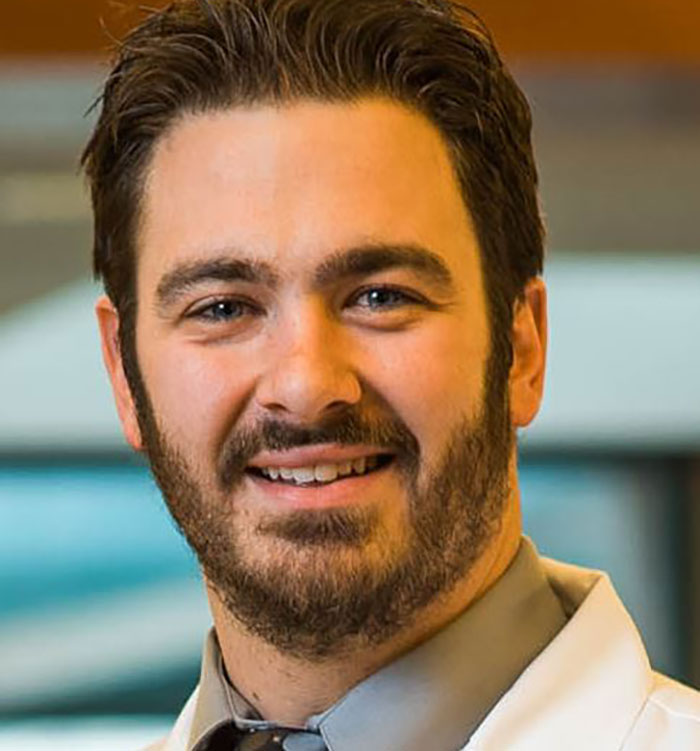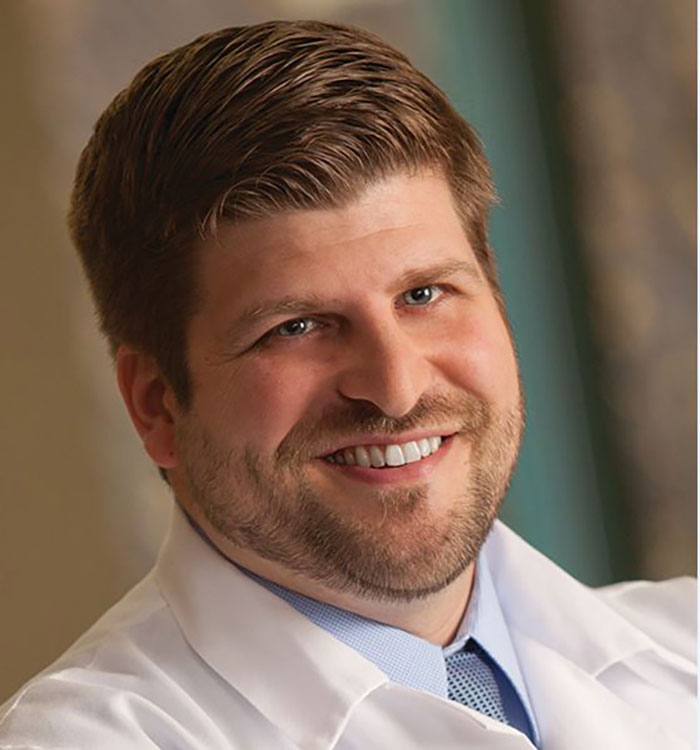A Joint Effort
November 16, 2017
New, collaborative approach to treating young adult hip dysplasia combines two procedures in one surgery
UH Department of Orthopaedics - Winter 2018
 Robert Wetzel, MD
Robert Wetzel, MD Michael Salata, MD
Michael Salata, MDWhen a young adult presents with hip pain that does not improve after rest, ice and physical therapy, a physical exam and imaging studies often uncover hip dysplasia. Hip dysplasia can cause pain, cartilage damage, labrum tears, and even arthritis.
“Typically, physicians approach hip dysplasia in a staged fashion,” says Robert Wetzel, MD, Orthopaedic Traumatologist at University Hospitals Cleveland Medical Center and Assistant Professor of Orthopaedics at Case Western Reserve University School of Medicine. “Open surgery and arthroscopy are done separately and in two different settings, often by the same provider.”
However, doctors at UH Cleveland Medical Center are taking a different approach, which is helping young patients recover faster and spend less time in the operating room.
TEAMING UP
Dr. Wetzel teams with colleague Michael Salata, MD, Director of the Joint Preservation and Cartilage Restoration Center at UH Cleveland Medical Center and Associate Professor of Orthopaedics at Case Western Reserve University School of Medicine. The doctors run parallel clinic days that allow them to evaluate patients together – and their collaboration extends into the operating room. Dr. Salata performs arthroscopy on a patient. As soon as the scope is completed, Dr. Wetzel steps in to perform a pelvic osteotomy. Both procedures are performed in the same anesthetic setting.
“It is the ‘one and done’ approach to hip dysplasia,” Dr. Wetzel explains. “The combined surgeries allow us to address different parts of the hip at the same time. Shape and orientation of the hip socket, any damage done to the cartilage or labrum, any deformity on the femoral head – that can all be addressed in a single surgery.”
Patients do not have to undergo one procedure, recover and then endure a second surgery. Plus, the combined approach decreases the use of anesthetic and speeds up recovery time.
COMBINED EXPERTISE
Hip pain and hip dysplasia in young adults is not uncommon. Drs. Salata and Wetzel see young adults anywhere from 16 to 40 years old with this condition on a regular basis.
Together, the doctors offer a combined expertise that is rarely found in the typical approach to treatment.
“I have done well over 1,500 arthroscopies in my career here,” Dr. Salata notes. “Dr. Wetzel is an expert hip surgeon. Together, we have the expertise of arthroscopy and open pelvic osteotomies.”
A single provider can perform both of those procedures, but arthroscopy and open hip preservation surgery represent two unique skillsets that require significant mastery. One provider is likely an expert in one of the procedures, but less so in the other. By working together, Dr. Salata and Dr. Wetzel bring expertise in both procedures.
During their years working together, Drs. Wetzel and Salata have experienced many successful cases. Just recently, the two-surgeon team performed surgery on a collegiate volleyball player with hip dysplasia. Five months after the procedure, the young patient was cleared to play again.
LOOKING AHEAD
This combined approach to addressing young adult hip dysplasia is one of the most exciting techniques in the field today. Still, Drs. Salata and Wetzel are constantly working to find innovations to make the procedure even more safe and effective. That includes looking for ways to make the minimal incisions even smaller and to further reduce the trauma to surrounding muscle tissue. The less invasive the procedure, the faster patients can get back to their busy lives.
Both surgeons are also collecting data on their technique. The next step will be to publish that data and share it with their peers around the country so they can replicate the results.
“We think that what we are doing can be a game-changer for people,” Dr. Salata says.
If you have a young adult patient who is experiencing hip pain or has received a hip dysplasia diagnosis, you can call 216-983-PLAY (216-983-7529) to consult with Dr. Salata and Dr. Wetzel.


